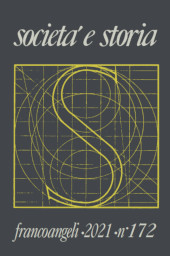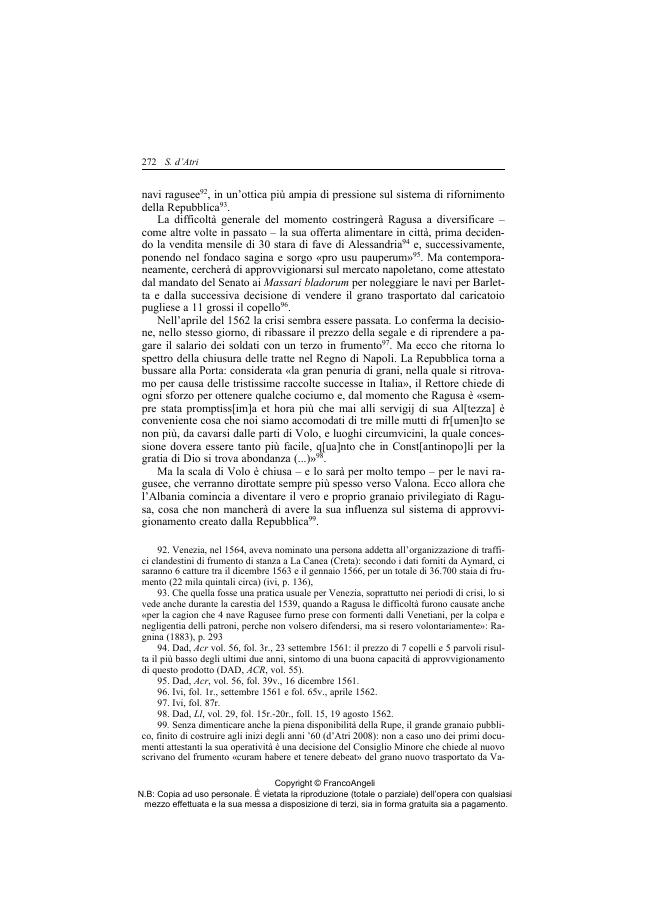Fin qui il popolo nostro si è cibato con li fichi et con le uve : carestie e annona nella Ragusa (Dubrovnik) del XVI secolo
259-285 p.
Perché studiare le carestie nel Mediterraneo di età moderna? L'autore cerca di rispondere a questa domanda proponendo l'analisi di una carestia ma all'interno di un approccio comparativo che abbraccia il lungo cinquecento, nel tentativo di costruire il modello d'intervento della Repubblica di Ragusa (Dubrovnik) non solo di fronte alle crisi, ma anche in relazione al sistema annonario nel suo insieme. Quel "sistema raguseo" costruito con un misto di "genio politico" e intraprendenti iniziative mercantili, che ha il suo fondamento e la sua ragione d'essere nel rapporto privilegiato con l'Impero ottomano. Un rapporto che ne costituisce un indubbio punto di forza ma anche, come si vedrà nel saggio, la sua potenziale debolezza. [Testo dell'editore].
What are the reasons for studying Mediterranean famines in the early modern age? The author attempts to answer this question by proposing to analyze a famine with a comparative approach embracing the long sixteenth century; in other words by trying to build a model of intervention by the Republic of Ragusa (Dubrovnik) not only in the face of crises, but also in relation to the provisioning system as a whole. This "Ragusa system" shows a mixture of "political genius" and commercial enterprise, which has its foundation and raison d'etre in the privileged relationship of the Republic with the Ottoman Empire. This relationship was a source of undoubted strength but it also, as cass. will be argued in the paper, involved a danger of potential weakness. [Publisher's text].
Fa parte di
Società e storia : 172, 2, 2021-
Articoli dello stesso fascicolo (disponibili singolarmente)
-
Informazioni
Codice DOI: 10.3280/SS2021-172002
ISSN: 1972-5515
MATERIE
PAROLE CHIAVE
- Ragusa, Mediterraneo, annona, carestia, sistema, diplomazia
- Ragusa, Mediterranean, annona, famine, system, diplomacy



